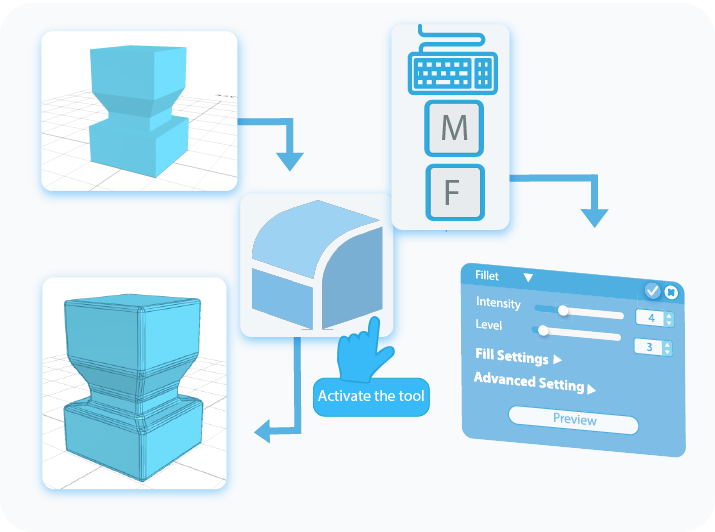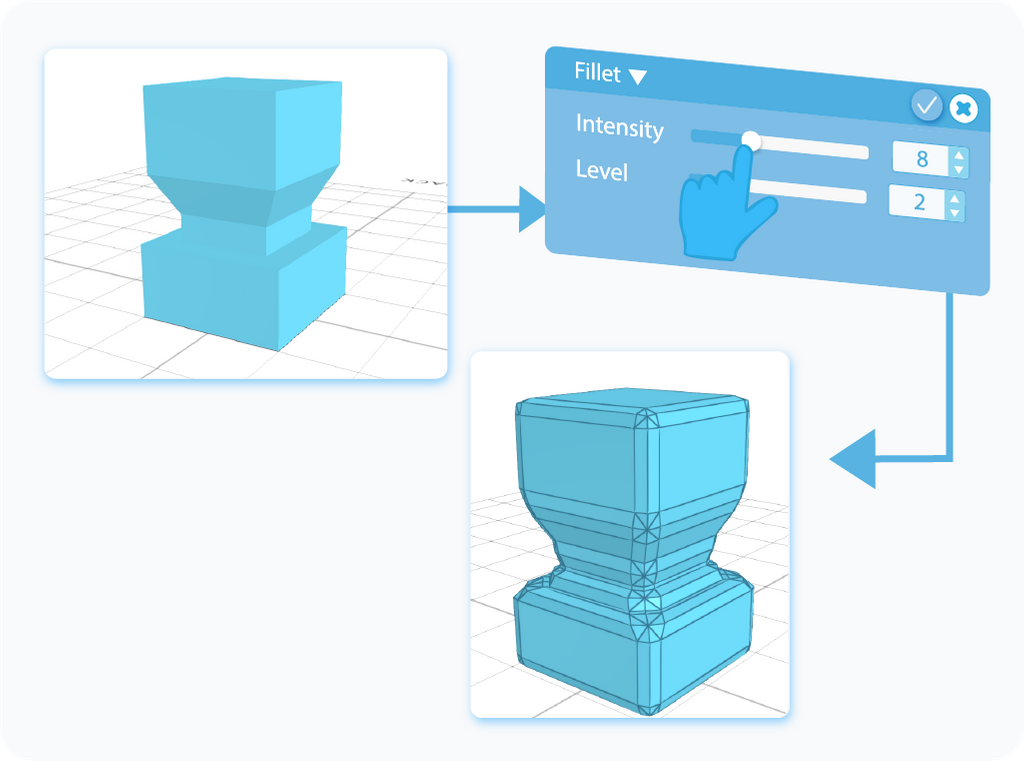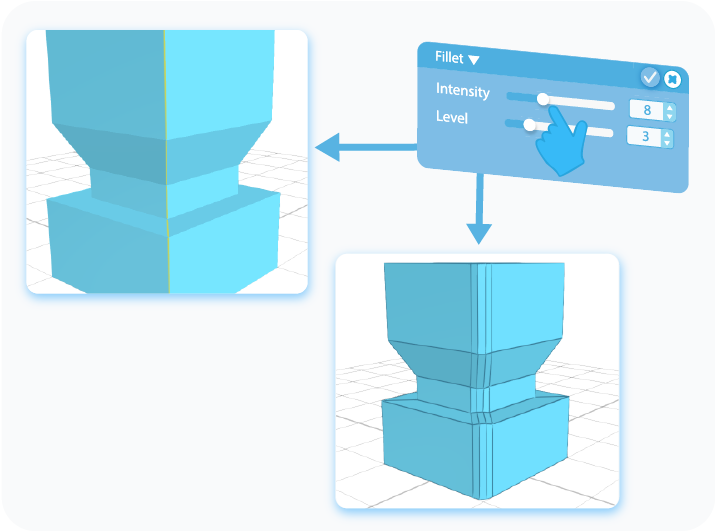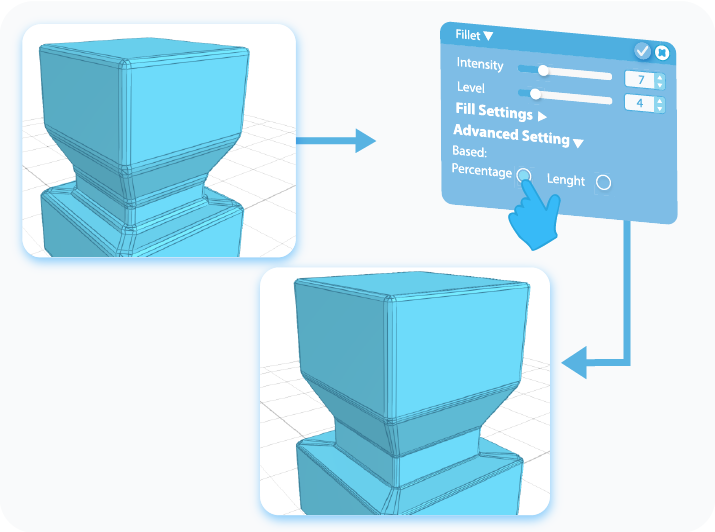Fillet Tool
Table of contents:
Introduction
Fillet
Fillet a region
Fill Settings
Advanced Settings
Hello!
Welcome to the article, in which we are going to learn about SelfCAD's 3D modeling tool called Fillet. I am going to explain all of its ins and outs and present its general applications. On top of that, I will share a few Tips and Tricks that you could use with Modifications.
Fillet is one of the Modify tools available in SelfCAD, and you can find it in the main Toolbar, in the Modify drop-down list. As its name suggests, it allows you to modify selected objects, or selected regions of objects, by rounding the edges of the model.
Modify is a unique category because the tools in it do not rely on the topology of the object to apply their modifications. Instead, they cut the object and create new topology when needed.
On top of that, with the Fill and Advances Settings of the Fillet, you will be able to customize the bevel even further.
Follow this article to learn all about this tool!

Select the object

The first step of using any modeling tool is selecting the object on which you want to use it. You can select objects by either left-clicking on them in the workspace or by selecting them in the Object Management section, in the right-side panel. The second option has an in-built search engine, which is extremely useful when you are working with multiple objects.
Activate the tool

Once the object is selected, you can activate the Fillet tool by selecting it from the Modify drop-down list or use a shortcut by pressing the ‘M+F’ combination on your keyboard. This way, you’ll open a Tool Setting Panel with all of the customizable options for this tool on the left side of your screen.
Intensity

There are two settings that allow you to Fillet the selected object. The first of them is Intensity, which refers to the amount of the object that you will Fillet. You can set this value by either moving the correct slider or by typing the value directly into the text-box next to it.
Level

Following the Intensity is the setting called Level, which allows you to set the smoothness of the Fillet. Similar to the previous setting, you can set it by either moving the correct slider or by typing the correct value directly into the text-box.
Select a region

SelfCAD allows you not only to Fillet to the object itself, but you can also Fillet some of its regions. To do so, you need to select them first. In the Right Side Panel, you will find an Interactive Rectangle, where you can enter one of the following selection modes: Face, Vertex, and Edge. Then, you can select the parts of the object to whom you want to Fillet.
Fillet a region

Using Fillet on regions works exactly the same as using it on the object itself does. After selecting a region or regions, that you want to modify, you can do so by either moving the slider of the Intensity and the Level option or by typing the values directly into the text-boxes to use the Fillet.
Fill Settings

Fill Settings allow you to modify the topology of the object after the Fillet takes place. All of the Fill Settings are enabled by default, which makes the object manifold, and by disabling them, you will delete parts of its topology.
Fill Polygons

The first option in the Fill Settings is called Fill Polygons. As you can guess, it will modify the object by deleting its Polygons.
Fill Edges

The second option in the Fill Settings is called Fill Edges. Similar to the previous setting, deselecting it will modify the object by deleting the Edges of the object.
Fill Corners

The third and the last of the Fill Settings is called Fill Corners. Just like before, disabling this option will delete the Vertices of the object.
Advanced Settings: Based

At the bottom are the Advanced Settings of the Fillet tool. After expanding the drop-down list, you will notice two settings. The first of them is Based, which allows you to choose the method of measuring. There are two options here, the Length and Percentage, both of which should be self-explanatory, thus not require a description.
Advanced Settings: Profile Offsets

The second of the Advanced Settings of the Fillet tool is called Profile Offset, which allows you to set how deep the Fillet is going to be as well as its direction. You can use both positive and negative values to change this setting, which will change the direction of the Fillet.
And that’s about it for the Fillet. After reading this article, you should know the basics of the Fillet tool and how to use it, and know about its different applications. Of course, the graphics shown here were just examples, and using this tool on other shapes will give you slightly different effects, but its underlying principles will always stay the same.
That's all I have for you today. I wish you success in your future projects. See you, and stay tuned for more content to come!
Haven't tried SelfCAD yet? Register now, and try it out for free!
Do you want to learn 3D modeling? Check out our interactive tutorials.




